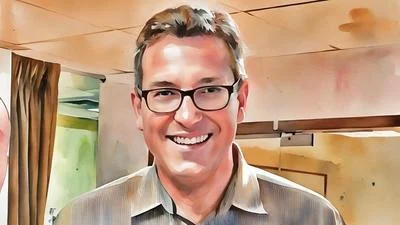The Congressional Record is a unique source of public documentation. It started in 1873, documenting nearly all the major and minor policies being discussed and debated.
“PROTECTING YOUTH AT WORK: HEALTH, SAFETY AND DEVELOPMENT OF WORKING CHILDREN AND ADOLESCENTS IN THE UNITED STATES” mentioning the U.S. Dept of Labor was published in the Extensions of Remarks section on pages E350-E352 on March 4, 1999.
The publication is reproduced in full below:
PROTECTING YOUTH AT WORK: HEALTH, SAFETY AND DEVELOPMENT OF WORKING
CHILDREN AND ADOLESCENTS IN THE UNITED STATES
______
HON. TOM LANTOS
of california
in the house of representatives
Thursday, March 4, 1999
Mr. LANTOS. Mr. Speaker, every five days a young person is killed on the job in this country. Every 40 seconds a child is injured on the job. The occupational injury rate for children and teens is more than twice as high than it is for adults. These statistics are totally unacceptable for a civilized, advanced society like ours. On the eve of the 21st Century, this situation is a national disgrace and it is totally unacceptable.
We must ensure that our children are safer at work. Education and healthy development are of primary importance during childhood and adolescence. Working should develop a young person's character, not burden them with potentially lifelong ailments. Work should help students excel in school, prepare them for a productive life and encourage their healthy development.
Mr. Speaker, I rise today to call attention to the alarming problems associated with child labor. I ask that a summary of an important study recently released by the Board on Children, Youth, and Families of the National Research Council and the Institute of Medicine entitled
``Protecting Youth at Work'' be placed in the Record. The National Research Council is the nonprofit arm of the National Academy of Sciences and Engineering. The report was presented to Members of Congress and their staffs last week at a briefing sponsored by our esteemed colleague, Representative Martin Meehan.
Mr. Speaker, ``Protecting Youth at Work'' is the product of a blue-
ribbon panel of experts selected to represent a broad range of expertise in areas relating to child development, including adolescent social and biological development, public agency programs and practice, law, economics, sociology, psychology, occupational medicine and rural health programs. The committee laid down four general guiding principles for protecting youth at work. First, education and development are of primary importance during the formative years of childhood and adolescence and although work can contribute to these goals, it should never be undertaken in ways that compromise education or development. Second, the formative and malleable nature of childhood and adolescence requires a higher standard of protection for young workers than that accorded to adult workers. Third, businesses that employ young workers assume a higher level of social obligation which should be reflected in the expectations of society as well as in public policy. And finally, everyone under 18 years of age has the right to be protected from hazardous work, excessive work hours, and unsafe or unhealthy work environments, regardless of size of the enterprise in which he or she is employed, his or her relationship to the employer, or the sector of the economy in which the enterprise operates.
``Protecting Youth at Work'' urges Congress to authorize the US Department of Labor to limit the hours that 16- and 17-year-olds can work (limits already exist for children under the age of 16), eliminate child labor exemptions and exceptions in our labor laws which do not protect children working in the agricultural sector, and allocate more resources to reducing and eliminating the startling disparity of injuries and deaths among workers under the age of 18 as compared to that of adults.
Mr. Speaker, our child labor laws should take into account changes in the modern workforce. For example, working during the school year has become much more commonplace among America's youth over the past decades--fewer than 5% of students held school-year jobs before 1950. In the 1990's, half of 16- and 17-year-olds work during the school year and 80% of all students have a job at some point during the school year while they are in high school. ``Protecting Youth at Work'' found that more children are working more hours than ever before in our nation's history.
Mr. Speaker, more and more American children don't have enough time or energy to devote to their studies. While a job can promote self-
esteem and teach discipline, working excessive hours takes too much away from school--academic performance can suffer and so does participation in extracurricular activities. ``Protecting Youth at Work'' found that young people who work more than twenty hours end up sacrificing sleep and exercise, and spend less time with their families, in addition to shortchanging their homework. Just look at the facts. The amount of teenage work is higher in the United States than in any other country in the industrialized world. Educators say that is part of the reason why American students lag behind their foreign counterparts. As policy makers, it is time for us to carefully weigh the benefits of a job against the toll excessive or unsafe work can take on a child's academic performance and healthy development.
Mr. Speaker, my legislation, ``The Young American Workers' Bill of Rights Act,'' which I introduced in the last Congress and which I will be reintroducing again soon in this Congress, reflects the problems and conclusions discussed in ``Protecting Youth at Work.'' This comprehensive domestic child labor law reform bill addresses two major aspects of child labor: the deaths and serious injuries suffered by young workers in the workplace and the negative impact the working excessive hours during the school year can have on a youth's education and academic performance.
Specifically, ``The Young American Workers' Bill of Rights Act'' proposes new sanctions for willful violations of child labors laws that result in the death or serious bodily injury to a child, strengthening existing limitations of the number of hours children under 18 can work while school is in session, protection for children under the age of 14 who are migrant or seasonal workers working in agriculture (except in the case of children of family farmers), requiring better record keeping and reporting of child labor violations, and specifying that minors may not use or clean certain types of hazardous equipment or engage in certain hazardous occupations, such as poultry processing and handling pesticides. Mr. Speaker, the aim of this legislation is to ensure that the job opportunities for America's youth are meaningful, safe and healthy, not to discourage children from working.
I urge my colleagues to carefully review ``Protecting Youth at Work'' and to join me in supporting the enactment of meaningful child labor law reform legislation during this Congress.
Protecting Youth at Work
Congress should authorize the U.S. Department of Labor to limit the number of hours that all youths under the age of 18 can work during the school year. The jobs held by children and adolescents in the United States should not interfere with the educational opportunities and healthy development they need to thrive later in life.
Congress also should eliminate current distinctions in child labor laws between agricultural and nonagricultural employment, says a committee of the National Research Council and Institute of Medicine in its report Protecting Youth at Work: Health, Safety, and Development of Working Children and Adolescents in the United States. In addition, because of the hazardous nature of many agricultural jobs--such as working with heavy equipment and around dangerous chemicals--Congress should examine the effects and feasibility of extending Occupational Safety and Health Administration regulations to cover all young people, no matter where they work.
More broadly, the Labor Department should review regulations intended to protect employed youth from hazards in the workplace. Because of the many changes that have occurred in the U.S. economy and society in the past 30 years, the federal government needs to update and enhance these regulations and adequately enforce the laws that cover children and adolescents at work.
A NATIONAL NORM
Work is a common part of the lives of many children and most adolescents in the United States. In surveys, 80 percent of high school students interviewed say that they have held jobs sometime during their high school years.
Working has a broad mix of positive and negative effects on young people. It provides them with valuable lessons about responsibility, punctuality, dealing with people, and money management, while increasing their self-esteem and helping them become independent and skilled.
But the workplace also can be dangerous. Work-related injuries send tens of thousands of children and adolescents to hospital emergency rooms annually. Hundreds of these young people require hospitalization, and at least 70 die of work-related injuries every year. The rate of injuries per hour worked is almost twice as high for children and adolescents, in part because of their inexperience and lack of training. The workplaces with the most injuries for young workers are retail stores and restaurants, manufacturing and construction, the public sector, and agriculture. Furthermore, an unknown number of young workers are exposed to toxic or carcinogenic substances, which may cause illnesses many years later.
``High-intensity work''--generally defined as more than 20 hours per week--is associated with additional negative consequences for adolescents, ranging from less time spent with families and a lack of sleep to substance abuse and minor deviance like theft and aggression.
Protecting employed youth
The legal and regulatory provisions developed years ago to protect employed youth do not reflect today's work hazards or important changes in rates of school attendance and employment. For example, exempting 16- and 17-year-olds from limitations on working hours was reasonable when most of them had left school and were earning money for their families; now that the vast majority remain in school, this exemption no longer makes sense.
Other rules and regulations regarding working youth also need to be updated. The Department of Labor should work with the National Institute for Occupational Safety and Health
(NIOSH) to review periodically the rules that define which jobs are too hazardous for workers under the age of 18. Steps to eliminate outdated regulations, strengthen inadequate ones, and develop additional restrictions or safeguards to address new technologies and working conditions should be based on research provided by NIOSH.
Many of the industries that employ large numbers of children have high injury rates for workers of all ages, but young workers often do not receive appropriate health and safety training. The developing physical, cognitive, and emotional characteristics of adolescents--along with their inexperience--should be considered in understanding the risks they face and in designing job training for them. Issues that need particular attention are the exposures of working youth to pesticides and other toxic substances and the adequacy for young workers of state workers' compensation systems.
Education
A national initiative, spearheaded by NIOSH, could promote understanding of safety hazards in the workplace and the protections to which employed youth are entitled by law. Regional resource centers and community partnerships could provide assistance to schools, parents, employers, government agencies, and youth.
Employers who provide healthy, safe, and beneficial workplaces for young people should be recognized. The secretary of labor should convene a prestigious group to develop criteria for designating ``commendable workplaces for youth.'' Local organizations then could use these criteria to identify exemplary employers.
Better Information
Although a combination of federal, state, and local data sources provides a fair amount of information about working teenagers, significant information gaps remain. NIOSH needs to develop and implement, with other federal agencies, a comprehensive plan for monitoring the injuries, illnesses, and hazards experienced by workers under age 18. The Bureau of Labor Statistics should routinely collect and publicly report data on the employment of young people age 14 and older. In addition, these and other federal agencies should conduct research in several critical areas, including the employment of children under age 14 and the most effective strategies to protect youth in the workplace.
____________________








